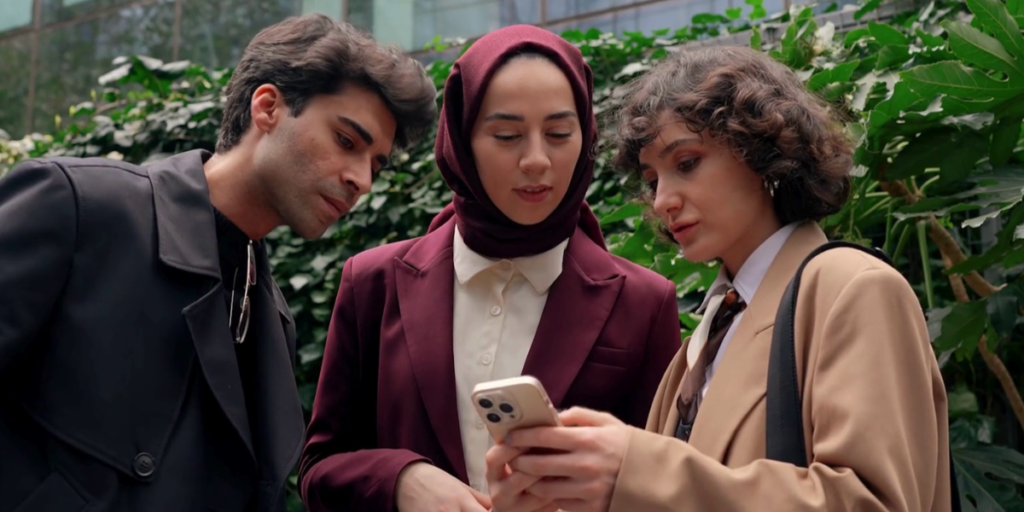Well, there are few surprises here; 2024 was a pivotal year for the machine translation market, both in its rapid adoption and in the technological advancements we saw across language accessibility tools. As we settle into the New Year, end users and AI professionals alike are buzzing to predict what trends and new features 2025 is shaping up to bring. And if last year was anything to go by, we can expect even bigger leaps and bounds.
As a warm up, if you’re looking for an in-depth analysis or data about the AI translation market in 2024, check out our guide to ‘The 10 Most Important Statistics & Breakthroughs in AI Speech Translation from 2024’. If you want to dive right into 2025 though then grab yourself a coffee, get comfy, and keep reading.

Predictions for Speech Translation in 2025
With the foundation laid in 2024, AI speech translation is poised to evolve rapidly in 2025. Here are the 10 top trends and predictions we’re likely to see this year:
1. Increased Adoption in the B2C World
First off, AI speech translation will transition from niche applications to everyday tools for millions. In fact, language accessibility will likely become an expected feature in all products and services, from consumer devices like smartphones to museum tours, customer call centers, virtual reality platforms, and more.
- Prediction: The global market is expected to continue its rapid expansion, reaching $5.73 billion by 2028, with a CAGR of 25.1% (The Business Research Company). Beyond that, we predict that over 75% of businesses offering global services will integrate AI translation tools by the end of 2025.
- Key Driver: AI speech translation’s ability to deliver real-time, on-demand solutions within consumer-facing contexts and spaces.
2. Expansion of AI in Public Sector Use Cases
As we’ve seen throughout 2024, governments and public institutions in particular will increasingly adopt AI speech translation this year to meet accessibility requirements. Services like town halls, healthcare consultations, and court proceedings will rely on live translation to accommodate multilingual communities.
- Prediction: 50% of U.S. city councils and state agencies will adopt AI translation tools by late 2025, driven by legal mandates and public demand.
- Key Driver: Increased diversity in local populations spurred by immigration, and a push for the implementation of assistive listening solutions (which can be partly solved through the provision of AI-generated captions).
3. Enhanced Integration with Emerging Technologies
We predict that AI speech translation will become a cornerstone of immersive technologies like virtual reality (VR) and augmented reality (AR). 2025 could be the year that multilingual VR meetings and cross-border AR experiences become a reality, revolutionizing the global collaboration and entertainment market.
- Prediction: 30% of VR platforms will offer built-in AI speech translation by 2025, enabling seamless multilingual communication in real time.
- Key Driver: A push from technology platforms to reach and engage with wider international audiences.
4. Accessibility for Smaller Businesses and Institutions
Advances in affordability and ease of use will make AI speech translation even more accessible to smaller organizations. Schools, nonprofits, and startups will begin to benefit from language accessibility solutions tailored to their needs, empowering them to communicate with audiences in a more inclusive way.
- Prediction: A 40% increase in adoption among small-to-medium enterprises (SMEs) is expected in 2025.
- Key Driver: The affordability of AI speech translation solutions, both in their ease of set-up and in their low maintenance once in place.
5. Breakthroughs in Emotional and Cultural Context
Until now, one of the challenges in AI translation has been capturing nuanced emotional tones and cultural context. In 2025, we expect significant improvements in this area, thanks to advanced machine learning models and cultural databases.
Voice cloning and personalization are also likely to see leaps in development this year. Today, AI voice synthesis is increasingly being combined with translation to replicate the speaker’s original voice, pitch, and emotions in another language.
- Prediction 1: AI platforms will achieve an 85% accuracy rate in translating idiomatic expressions and emotional context by the end of 2025.
- Prediction 2: The voice cloning market in translation is projected to reach $1B by 2025, growing at a 42% compound annual growth rate (CAGR). Voice cloning with emotion preservation could be implemented in as much as 30% of multimedia localization projects in 2025.
- Key Driver: Higher user expectations related to product experience, particularly for video dubbing tools that will need to incorporate isochrony (matching the original speech’s timing) for seamless audio dubbing.
6. The Rise of Generalist Models in Speech Translation
AI is increasingly moving towards generalist models capable of handling speech-to-text, speech-to-speech, and text-to-text translations across multiple languages within a single framework. Companies like OpenAI, Google DeepMind, and Meta are leading this charge today with universal models trained to understand and translate both common and low-resource languages.
- Prediction: By the end of 2025, 35% of AI-driven speech translation tools will integrate generalist models, up from approximately 20% in 2024. This will enable smoother transitions between speech-to-text, text-to-text, and speech-to-speech tasks.
- Key Driver: A global push for improved contextual understanding for better accuracy, and the reduced need for separate specialized tools for various translation tasks.
7. Data Privacy and Ethics in Language Services
With the growing use of AI-driven tools, data security and ethical concerns are naturally coming to the forefront. Clients are likely to demand more transparent data practices, particularly in sectors like legal, healthcare, and government. An improvement in one-the-edge models (AI systems designed to perform computations directly on local devices like smartphones, tablets, and wearable technology rather than relying on centralized servers) should increase confidentiality among end users.
- Prediction: The market for on-the-edge AI models in speech translation is projected to grow by 35% in 2025, reaching a market valuation of approximately $1.7 billion.
- Key Driver: Increased demand for offline translation capabilities and enhanced privacy solutions needed in high-risk sectors (source: Allied Market Research forecast).
8. Hybrid AI & Human Interpretation Models
As we noted in our 2024 review of the AI speech translation market, 2025 will see continued adoption of hybrid models, combining the strengths of AI and human interpreters. Promising quality, accuracy, and reliability, professional human interpreters are increasingly being integrated into hybrid solutions where AI handles routine tasks and professionals step in for complex scenarios. Real-time interpreter platforms will grow, offering services that, like KUDO’s, blend AI with human expertise (see our recent opinion piece in Slator for more on this trend).
- Prediction: Hybrid interpretation models will account for 40% of all interpretation services in 2025, representing a 33% year-on-year increase, with significant adoption in multinational organizations.
- Key Driver: Recognition of the merits and shortfalls of both language accessibility solutions, with AI being used for on-demand, high-volume tasks while humans step in for higher-stakes or culturally sensitive contexts.
9. Adoption of Low-Resource Language Coverage
Another key trend that will continue from 2024 into 2025; the demand for low-resource and minority language support is going to keep growing, particularly in regions of high linguistic fragmentation like Africa and South Asia. With human interpreters in short supply for many niche languages and dialects today, this is where we see the major benefits of companies investing R&D into AI speech translation.
- Prediction: By the end of 2025, tools supporting low-resource languages will increase their coverage by 50%, with a focus on languages spoken in Africa, Southeast Asia, and South America. Low-resource language solutions are predicted to generate $500 million globally.
- Key Driver: Inclusivity and wider language coverage. Major players are working on extending language coverage for underrepresented populations.
10. Advancements in Real-Time Speech Translation
Real-time speech-to-speech translation made big strides in 2024, and this year, we can expect it to become faster and more accurate thanks to innovations in neural network architectures and multimodal learning. For example, we predict a rise in the adoption of generalist models – large, versatile AI models capable of handling a range of speech translation tasks across multiple domains and languages, without requiring task-specific fine-tuning. These models are designed to function as ‘all-in-one’ solutions, and could lead to significant user experience benefits such as lower latency for live meetings and events.
- Prediction: The global market for real-time speech translation tools is expected to reach $1.8 billion by 2025, with voice preservation technologies projected to see a 40% adoption rate in sectors like international events.
- Key Driver: The demand for enhanced user experience in international communication, such as increased expectations for naturalness and speed of speech translation.

Challenges Ahead for AI Creators in 2025
While 2025 is set to see remarkable advancements both in technology and in user experience, challenges remain:
- Ethical Considerations: Ensuring unbiased and culturally sensitive translations requires ongoing refinement of AI models.
- Privacy Concerns: Protecting user data in real-time translation environments will continue to be a priority.
- Digital Divide: Bridging the gap for under-resourced languages remains a significant hurdle, with only 20% of languages currently supported by major platforms.
- Suitability of AI for Certain Use Cases: At KUDO, we maintain that a hybrid human and AI approach is the only way to guarantee a truly successful language accessibility initiative in any organization. The accuracy and naturalness of human interpreters cannot be matched today by AI, despite what many AI-only providers may tell you, so continued education of the market in when to use a professional human interpreter vs an AI tool will continue to be crucial in meeting clients’ needs and expectations.
Key Takeaways & The Future of Speech Translation
To conclude, as AI speech translation continues to grow, its potential to connect people across languages and cultures is boundless. From education to language-accessible worship services, policymaking to entertainment, the possibilities are transformative and will continue to reshape the way that local communities and B2C businesses operate. In 2025, we’ll see this technology evolve from a communication tool to a cornerstone of global accessibility and inclusion.
Organizations that embrace these advancements will not only meet the needs of today’s multilingual world but also lead the charge in shaping a more interconnected future.
If you are looking to invest in a language accessibility initiative in your organization today, get in touch with our team for a demo of our Patented AI or human interpretation solutions.